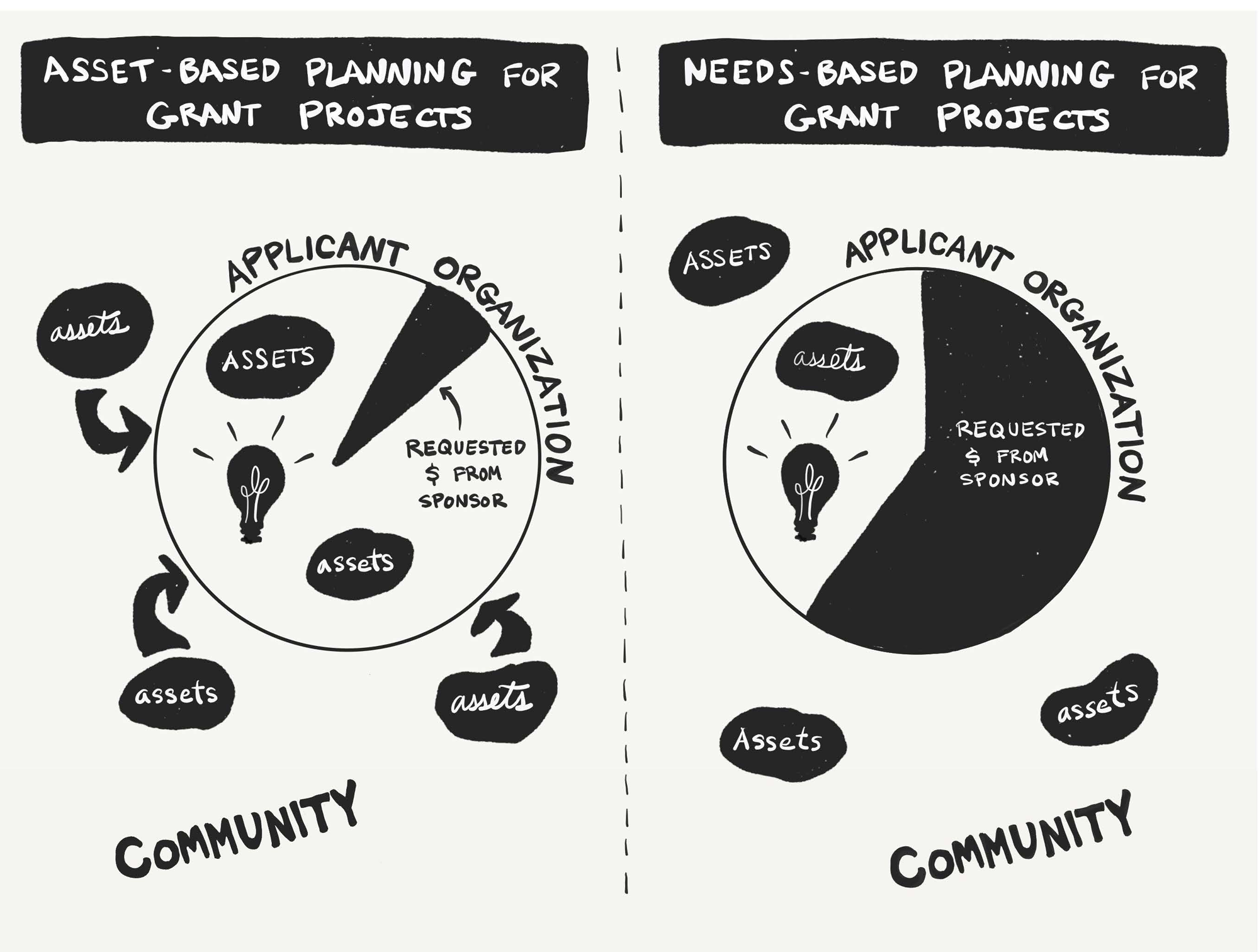Grant reviewers and funding agencies see their work as making sound investments in projects that will mobilize existing assets to meet community needs or solve community problems. They are cautious to assess the level of investment by partners and the applicant organization itself. This assessment balances the needs articulated in the proposal with the stated contributions of assets that are readily available to the applicant should the application be awarded. As a result, describing in full the assets to be contributed to the proposed project—personnel experience/skills and time, equipment, methods, past successes, facilities, etc.—is indispensable to making a case for funding a specific project. The proposal should describe how by combining these unique and available assets the applicant can meet needs and solve problems that are well documented. Often, when for the first time, assets are being combined in new ways by partnering organizations and individuals that haven’t worked together previously, the results generate innovative approaches. This is another added benefit to be articulated in the proposal narrative.
Reviewing applications that accomplish their stated goals through this asset-based approach can cause reviewers and program officers to enthusiastically support these types of applications. The exposure of community assets in proposals assures reviewers that the applicant has sought out the necessary resources that will make the project successful, while reassuring the funder that its investment in such a project will stimulate other like-minded investors. Building a committed group of supportive partners, both within and external to the applicant’s organization, will motivate funders to feel more secure about investing in these projects, especially if partner assets are being used to execute project’s goals, achieve stated results, and engage in sustainability strategies.
These infographics illustrate the different foci of those planning grant projects. The image on the left shows abundant resources being contributed to the project, with the sponsor providing the funding to activate these resources to achieve the project goal. The image on the right shows that the project lacks most of the resources needed, and therefore requests a larger proportion of funds in comparison, to compensate for this lack.
Illustrations by Morgan Boecher


